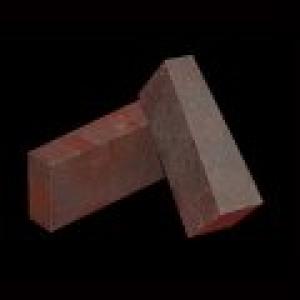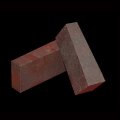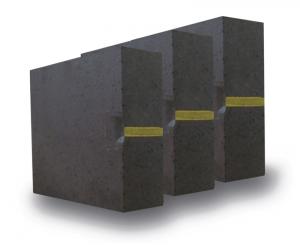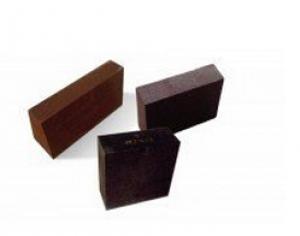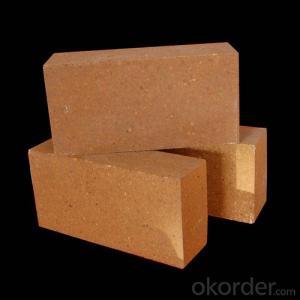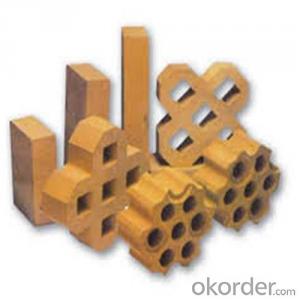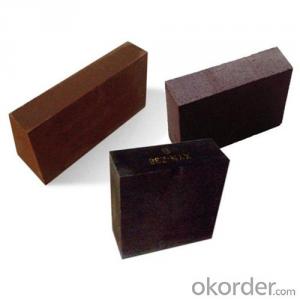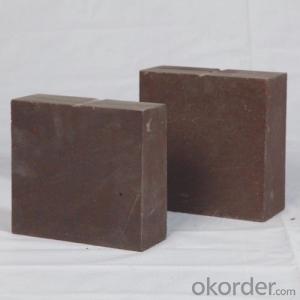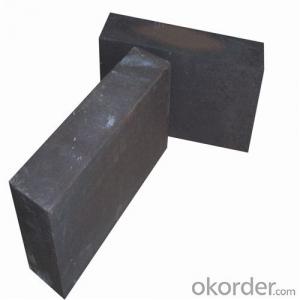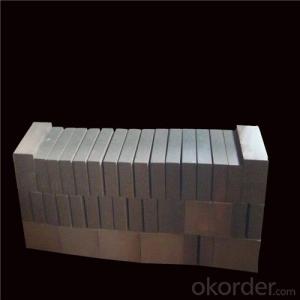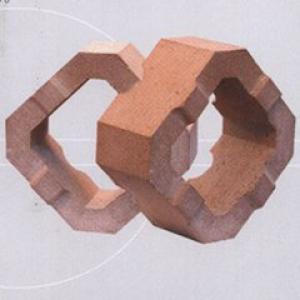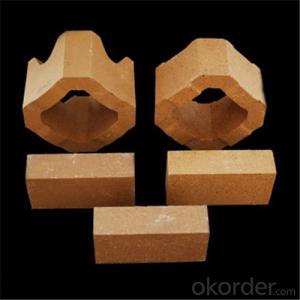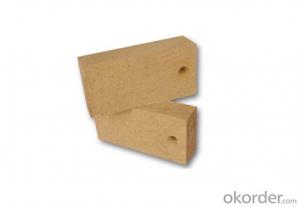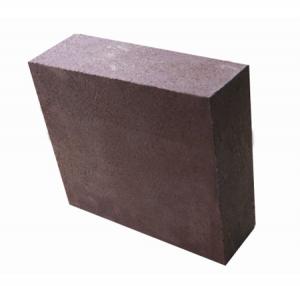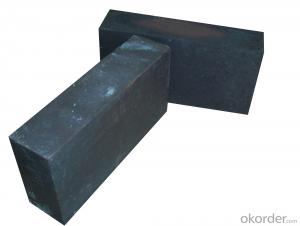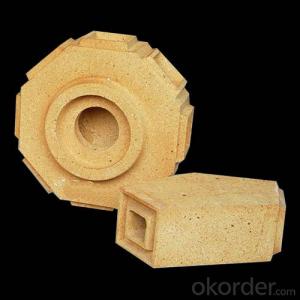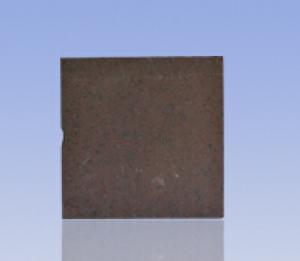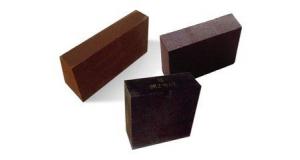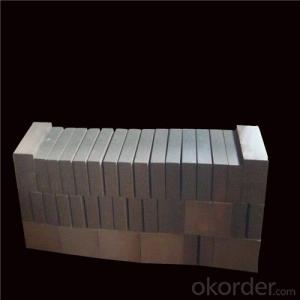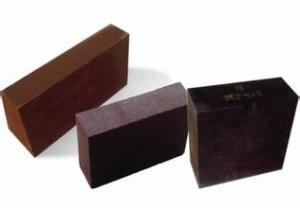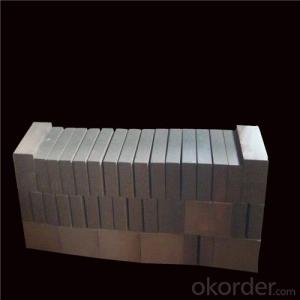Magnesite Chrome Brick - High Quality Refractory Material
- Loading Port:
- China Main Port
- Payment Terms:
- TT OR LC
- Min Order Qty:
- -
- Supply Capability:
- -
OKorder Service Pledge
OKorder Financial Service
You Might Also Like
General Information
CMAX magnesite-chrome brick is made of high quality magnesia and chrome ore.
CMAX direct-bonded magnesite-chrome brick is made of low impurity chrome ore and high purity magnesia and sintered at high temperature over 1700℃.
CMAX semi-rebonded and rebonded magnesite-chrome bricks are made partially or fully of synthetic fused clinkers. They are shaped under high pressure and sintered at very high temperature.
Feature
Good high-temperature performance
High thermal shock resistance
Strong slag resistance
High mechanical strength
Application
Cement rotary kiln
Non-ferrous furnace
- Q: What are the differences between magnesium chrome bricks, such as direct bonding, re bonding, semi bonding, CO sintering and chemical bonding? Hope expert advice..
- Direct bonded magnesia chrome brickThe loose effect caused by the expansion of spinel when the oxide of magnesia brick is directly reacted with the oxide of iron can also be used to make magnesia chromite brick with synthetic common sintered material. In addition, there are non burned magnesia chrome bricks, for example, non burned magnesia chrome bricks combined with inorganic magnesium salt solutions. The unfired magnesia chrome brick has the advantages of simple production process, low cost and good thermal stability, but the strength of the high temperature is far less than that of the burnt brick. In the late 50s, a so-called "direct bonding" magnesia chrome brick was developed. The characteristics of this brick raw material is pure, high firing temperature, periclase and spinel phase with high temperature directly, silicate and other low melting point phase for island distribution, therefore, significantly improve the high temperature strength and slag resistance of brick.
- Q: Process for producing magnesia chrome brick
- The oxide of iron reacts to produce a loose effect caused by the expansion of the spinel. Also, the magnesia chrome brick can be made from the synthetic common sintered material. In addition, there are non burned magnesia chrome bricks, for example, non burned magnesia chrome bricks combined with inorganic magnesium salt solutions. The unfired magnesia chrome brick has the advantages of simple production process, low cost and good thermal stability, but the strength of the high temperature is far less than that of the burnt brick. In the late 50s, a so-called "direct bonding" magnesia chrome brick was developed. The characteristics of this brick raw material is pure, high firing temperature, periclase and spinel phase with high temperature directly, silicate and other low melting point phase for island distribution, therefore, significantly improve the high temperature strength and slag resistance of brick.
- Q: How much is magnesium chrome brick a ton?
- The price of bricks in different places is not the same. The average price is about 3500 yuan
- Q: Magnesia chrome brick
- Magnesite brick and electric arc furnace melting magnesium chromium material by direct casting (see Figure microstructure, color), fused magnesia chrome brick material produced by the process of melting particles combined with magnesia chrome brick etc..
- Q: How many kinds of refractory bricks are there?
- High aluminum brick: Al2O3 content more than 75 higher than that of the refractory clay brick, anti corrosion resistance, suitable for cement kiln etc., long service life, but high price.
- Q: Magnesium chrome brick price?
- Dashiqiao magnesium brick factory of China Building Materials Academy is a joint stock company invested, constructed and managed by China Building Materials Academy.The plant was built in 1992, officially put into operation in 1993, covers an area of 89 thousand square meters, has a long 118 meters, an annual output of 30 thousand tons of high temperature tunnel kiln production line. The group has 1200 employees, 6 senior engineers, more than 20 engineers and technicians, and has strong technical force. Group's total assets of 5.5 million, with an annual output value of 600 million. Profit and tax 65 million yuan.
- Q: What are the types of magnesia chrome bricks for industrial use?
- It is possible to judge by the concrete kiln. The magnesium chrome bricks produced by real gold company are very good. Our factory purchased them the year before last, and their technicians were very professional, and gave us very good suggestions.
- Q: What is a half combination of magnesia chrome bricks?
- Opacifying particles as periclase spinel crystal structure, fully developed, as part of account of solution structure and matrix.
- Q: With different capacitance magnesia brick brick
- Fused magnesia brick brick has compact structure, high mechanical strength,
- Q: What is the difference between magnesia chrome brick and direct bonded magnesia chrome brick?
- The magnesium chromium brick with the direct bonded magnesia chrome brick is different: 1 with the purity of magnesia (raw materials) 2: the sintering temperature of common magnesia chrome brick sintering temperature at 1550 DEG ~1600 DEG, direct the magnesium chromium brick sintering temperature is over 1700 DEG C, because of its more than 1700 DEG C, magnesia chrome brick microstructure occurred change, and periclase chromium ore directly combined, so called direct bonded magnesia chrome brick
Send your message to us
Magnesite Chrome Brick - High Quality Refractory Material
- Loading Port:
- China Main Port
- Payment Terms:
- TT OR LC
- Min Order Qty:
- -
- Supply Capability:
- -
OKorder Service Pledge
OKorder Financial Service
Similar products
Hot products
Hot Searches
Related keywords
